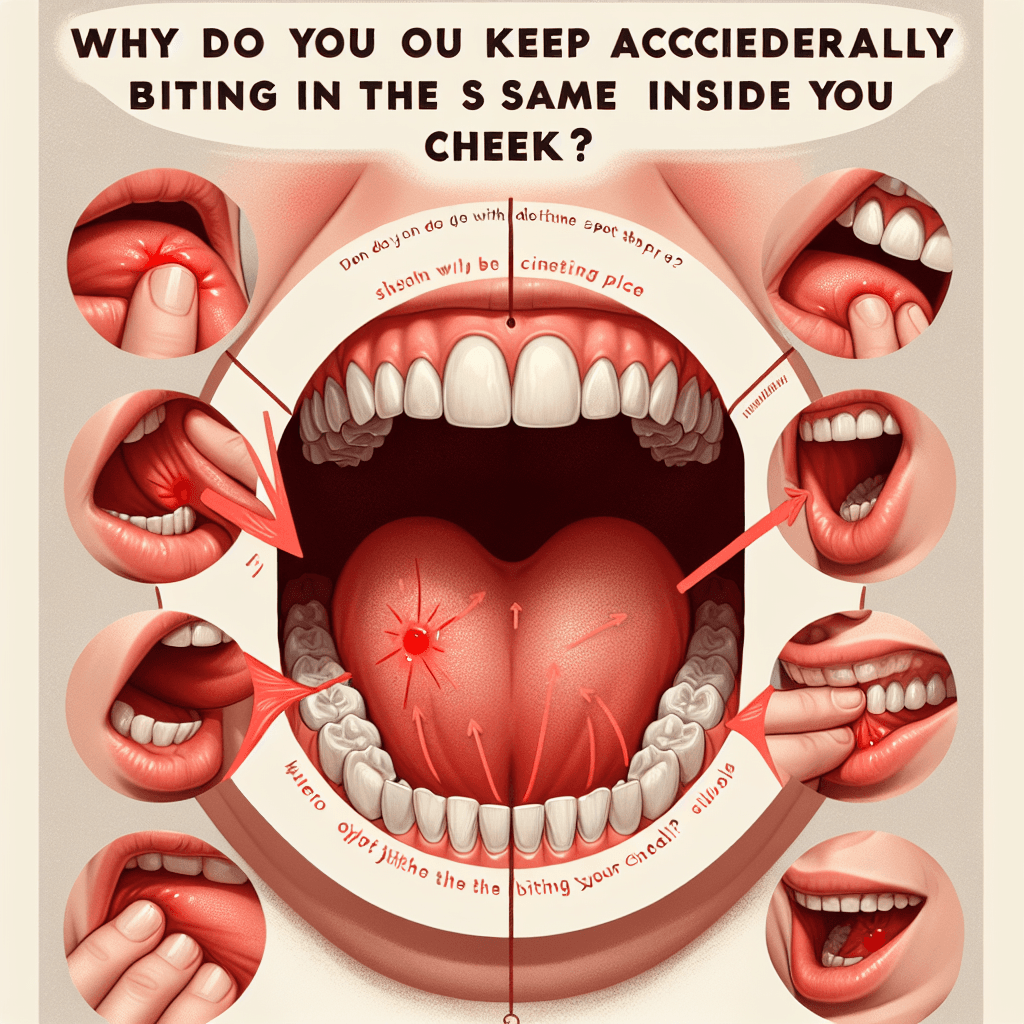Why do you keep accidentally biting the same spot inside your cheek
It’s not just bad luck; it’s a frustrating biological trap that makes your teeth target the same swollen spot again and again.


Too Long; Didn't Read
TLDR: You bite your cheek, causing it to swell. The swollen spot then gets in the way of your teeth, making you more likely to bite that exact same spot again and continue the cycle.
The Painful Cycle: Why Do You Keep Accidentally Biting the Same Spot Inside Your Cheek?
We’ve all been there. You’re enjoying a meal, talking with friends, or simply lost in thought, when suddenly—ouch! You’ve bitten the inside of your cheek. The initial shock is quickly followed by frustration, especially when, a day or two later, you bite the exact same spot again. It’s a baffling and painful cycle that can turn a simple meal into a cautious ordeal. But this common annoyance isn't just bad luck. There are concrete physiological and dental reasons behind this recurring problem. This post will explore the science behind why you keep accidentally biting the same spot inside your cheek and what you can do to finally break the cycle.
The Vicious Cycle of Swelling
The most immediate and common reason for a repeat bite is a simple, yet frustrating, biological response. When you first accidentally bite your cheek, the soft tissue becomes injured. Just like when you bump your shin or sprain an ankle, your body’s natural reaction is to send blood and fluids to the area to begin the healing process. This causes inflammation and swelling.
The problem is, this swollen spot now protrudes further into your mouth than the surrounding tissue. It has become a larger, more prominent target. As you continue to chew and talk, your teeth, which are used to the normal geography of your mouth, are now more likely to catch this swollen area again. Each subsequent bite causes more trauma and more swelling, perpetuating a vicious cycle that makes the spot even easier to bite.
Underlying Dental and Alignment Issues
If you find that cheek biting is a frequent occurrence and not just an occasional accident, there may be an underlying dental issue at play. Your teeth and jaw are designed to work in harmony, but when something is out of sync, your cheek can get caught in the crossfire.
Misaligned Bite (Malocclusion)
Malocclusion is the dental term for teeth that are not aligned properly. This can manifest as an overbite, underbite, or crossbite. When your upper and lower teeth don’t meet correctly, the soft tissues of your cheek may not be adequately protected during the chewing motion. Your teeth might shear past each other in a way that inadvertently traps and bites your cheek.
Problematic Teeth and Dental Work
Certain teeth can be the culprits.
- Wisdom Teeth: Erupting or impacted wisdom teeth can push other teeth out of position, altering your bite and reducing the amount of space in your mouth.
- Sharp Cusps: A tooth might have a particularly sharp point, or cusp, that is prone to snagging your cheek tissue.
- Ill-fitting Dental Work: A new crown, filling, bridge, or denture that hasn't been perfectly shaped can create an uneven biting surface, leading to accidental bites.
TMJ Disorders
The temporomandibular joint (TMJ) acts like a sliding hinge, connecting your jawbone to your skull. If you have a TMJ disorder, it can cause pain and affect the movement of your jaw. An irregular or unstable chewing pattern can easily lead to a misalignment that results in biting your cheek or tongue.
How to Heal and Break the Habit
Breaking the cycle involves both healing the current injury and addressing any root causes.
- Promote Healing: To reduce swelling and prevent infection, rinse your mouth with a warm salt water solution (half a teaspoon of salt in a glass of warm water) two to three times a day. Avoid spicy, acidic, or crunchy foods that can further irritate the sore.
- Be Mindful: While the spot is healing, chew your food slowly and deliberately. Try to chew on the opposite side of your mouth if possible. Being conscious of your chewing is often enough to avoid a repeat bite.
- Consult a Professional: If you notice that cheek biting is a chronic issue, it’s time to see your dentist. They can diagnose the cause by checking for sharp teeth that can be smoothed down, adjusting ill-fitting dental work, or assessing your bite for signs of malocclusion that may require orthodontic treatment.
Conclusion
Accidentally biting the same spot in your cheek is more than just a random, unlucky event. It’s often a predictable cycle started by an initial bite that causes swelling, making the area an easier target for a repeat injury. While this is the most common reason, frequent cheek biting can also be a red flag for underlying dental issues, such as a misaligned bite or problematic dental work. By understanding the causes, you can take simple steps to heal the sore and be more mindful while eating. If the problem persists, a visit to your dentist is the best way to break the painful cycle for good and ensure your long-term oral health.


